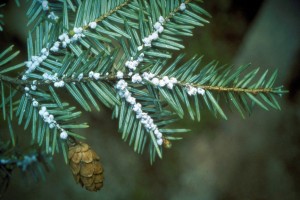At R.W. Emmott, we practice Integrated Pest Management (IPM) which is an effective and environmentally sensitive approach to pest management that relies on a combination of common-sense practices. IPM programs use current, comprehensive information on the life cycles of pests and their interaction with the environment. This information, in combination with available pest control methods, is used to manage pest damage by the most economical means, and with the least possible hazard to people, property, and the environment.
IPM is not a single pest control method but, rather, a series of evaluations, decisions for the control of your pest problems.
Correct identification of insects and the damage they may cause to the host plant is the key to effective pest control. Identification starts with the three main feeding methods that damage trees and shrubs.
- Piercing sucking insects – signs of damage: leaf discoloration, leaf wilting, premature leaf drop. Common types of insects are aphids, scale, leaf hoppers, mites, and leaf miners.
- Leaf chewing, eating, defoliators – signs of damage: holes in leaves, defoliation of leaves and needles. Common types of pests are beetles, caterpillars, webworms, and cankerworms.
- Borers – signs of damage; drill holes in trunk, galilees under bark in cambium region. Common types of insects are Asian long horn beetle, bark beetle, emerald ash borer, and bronze birch borer.
 Hemlock Wooly Adelgid is a very small insect related to aphids. Wooly adelgid is a piercing-sucking mouth type and feeds on plant sap. It is a problem with native eastern hemlock and Carolina hemlock.
Hemlock Wooly Adelgid is a very small insect related to aphids. Wooly adelgid is a piercing-sucking mouth type and feeds on plant sap. It is a problem with native eastern hemlock and Carolina hemlock.
The feeding activity of this insect injury is due to withdrawing plant sap. It is also believed that the adelgid introduces a toxin into the plant damaging the vascular system.
The wooly adelgid is a manageable insect. The best method of treatment is to identify the signs and monitor it on a regular time table. Once located there are a few options to choose from:
- Horticultural oils work very well with low risk or impact to surrounding environment.
- Imidacloprid is very effective as a systemic pesticide when applied through the soil or by trunk injections. Foliar application is also available.
Once the problem is located it needs to be treated. Hemlocks are high maintenance plants, which tend to be shallow rooted and prone to drought stress which does not help the infestation. 1-inch of water per week is needed to prevent stress.
Adding fertilizer to hemlocks leads to quick demise. Insects that are sap suckers accelerate activity with the addition of nitrogen (N) to hemlocks. Hemlocks with wooly adelgid should not be fertilized – you are fertilizing the adelgid with what it is seeking, nitrogen.
Please take a look at the video below to see one of the many application methods we utilize in our plant health care services. Soil root injections are an excellent method for systemic absorption of insecticides directly into a plant or tree’s vascular system.
Call us now at 508-865-3936 to schedule a consultation.

